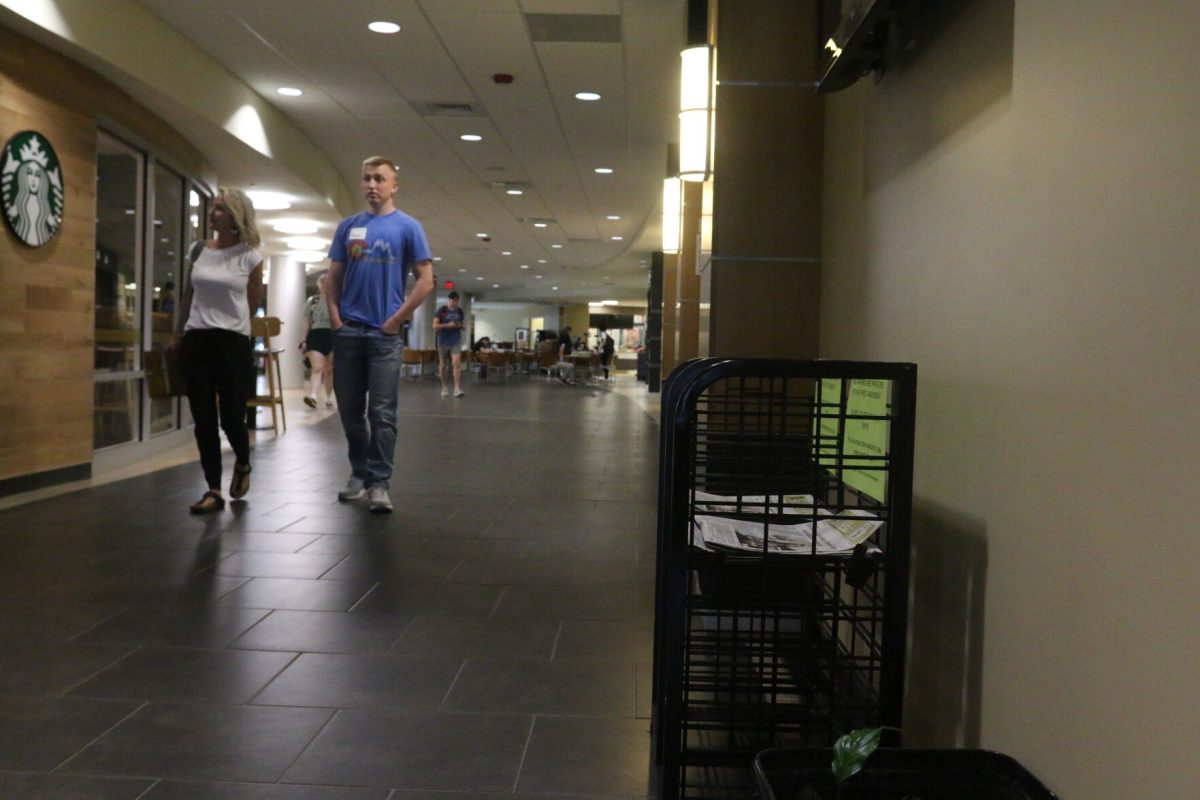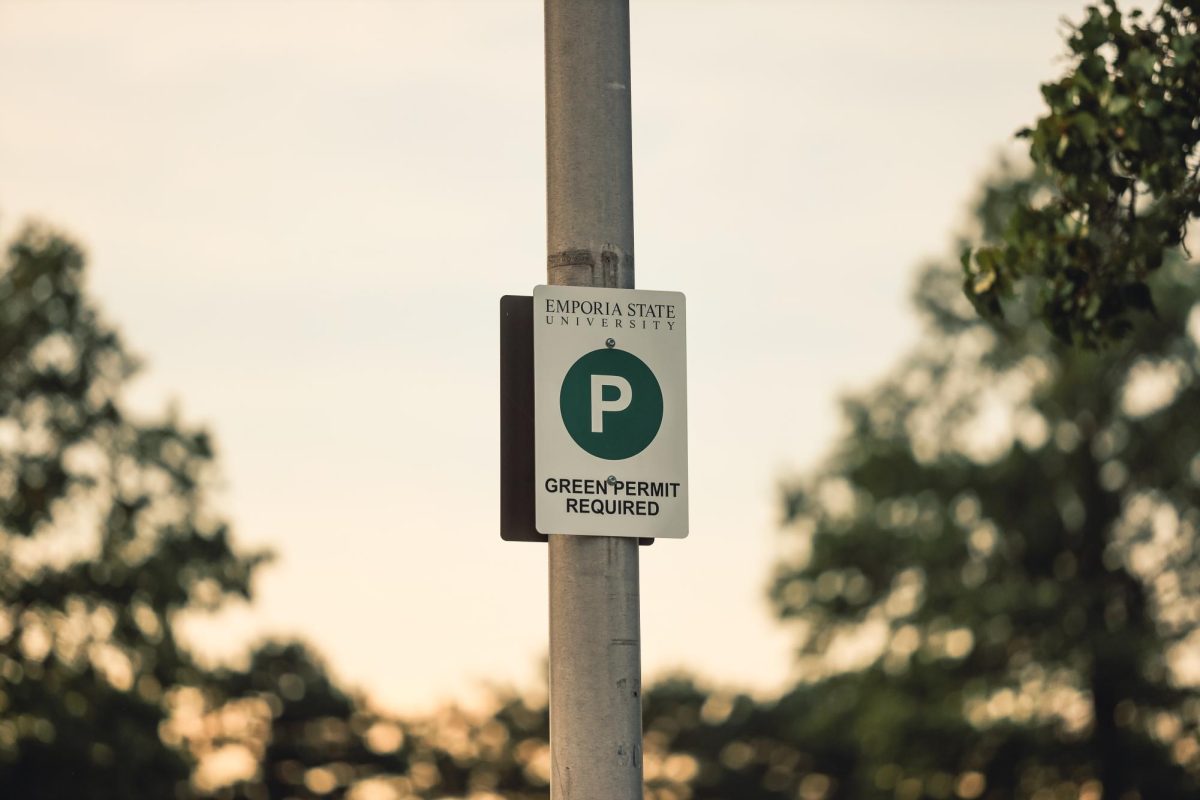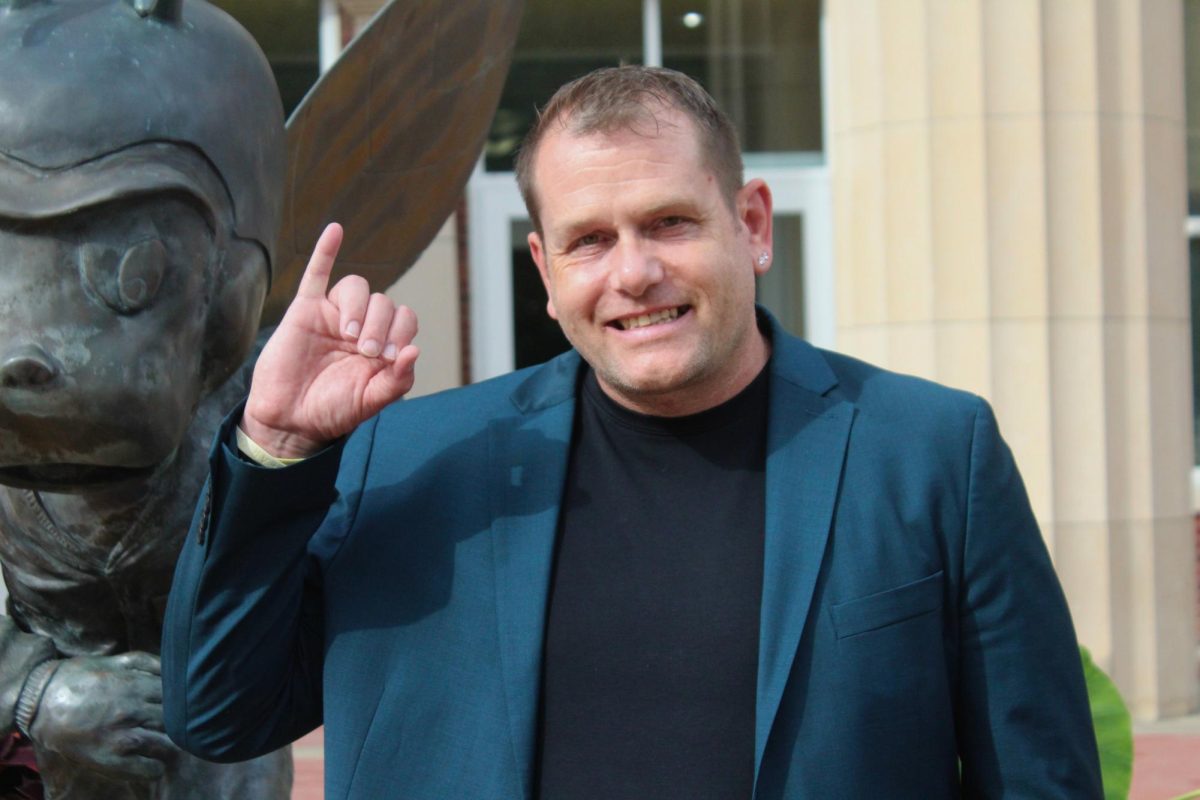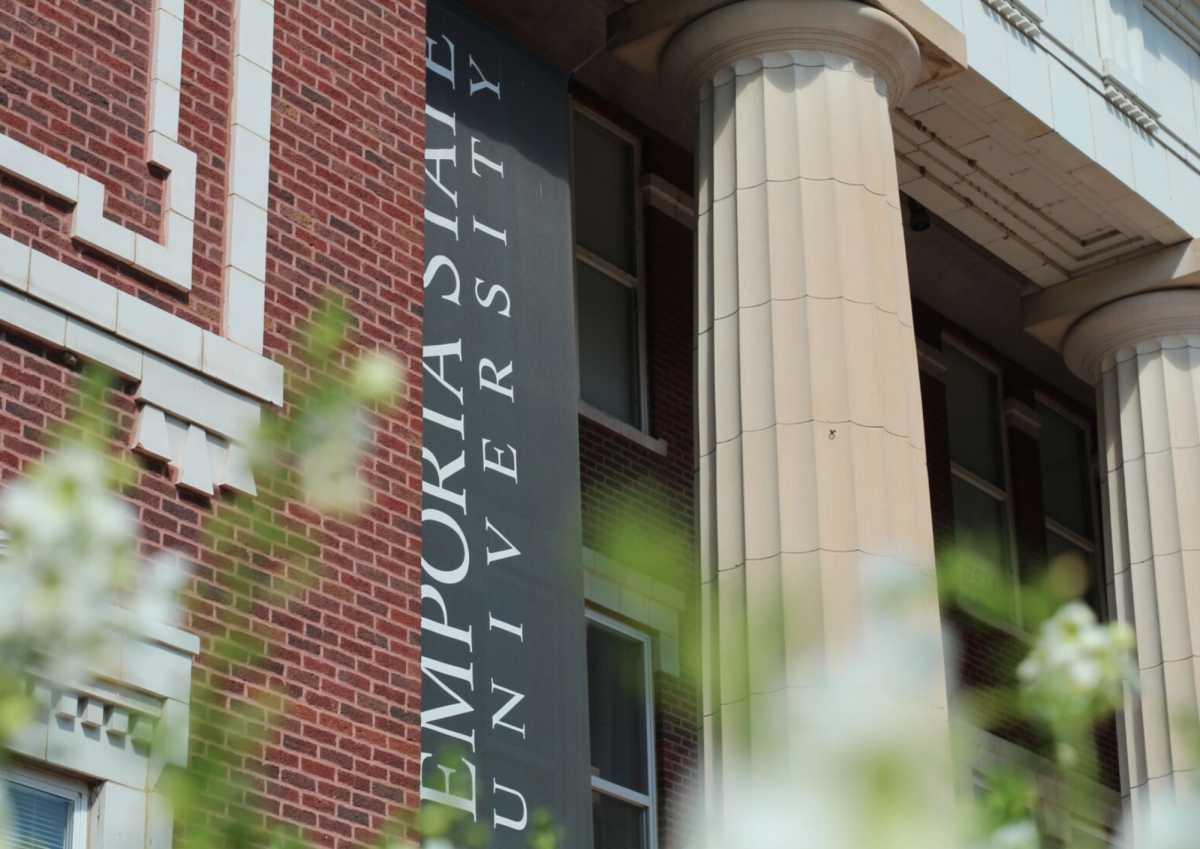When the editor-in-chief of Emporia State’s The Bulletin checked the newspaper racks on April 15 outside of Starbucks in the Memorial Union, she found two manila folders hiding the papers’ front page. The lead story of the April 14 edition was about a former student who was sued by Emporia State for unearned financial aid.
The day the papers were covered, a Hornet Connection was being held. Incoming students tour the school and enroll for the upcoming semester at this event. There were 107 incoming students in attendance plus their guests, which comes out to a rough estimate of 300 guests on campus. Check-in started at 8:30 a.m. and the event was over around 3 p.m.
Eppens thought it was a suspicious time for the newspaper racks to be tampered with.
“The timing of the coverup is hard to ignore,” Eppens said. “The front page obviously didn’t make the university look good on a day that a hundred new students and their families were on campus, so I think someone tried to keep these new people from seeing a news story that could scare them off or make them hesitant.”
The first amendment contains five freedoms: freedom of speech, press, religion, assembly and petition. The press have the right to publish news and information that is accurate and fair. Not only is covering up the paper preventing the press from being able to report news, but it is preventing readers from knowing what is going on around them.
After Eppens found the folders she picked them up and then proceeded to print off signs that read in all caps, “These papers are protected by the first amendment. Do not cover or tamper with. (You are more than welcome to take one to read though!)”
Eppens and staffer Cameron Burnett then handed out papers to guarantee potential readers had access to them at 11 a.m. for about 30 minutes and then went back again around 2 p.m.
The following Saturday a Black and Gold Day was held. Black and Gold Days are recruitment events for ESU.
By Monday, April 18, the signs Eppens had put up were taken off. The tape was even peeled off of the distribution rack. Eppens proceeded to file a report to Jerry Cook, the University Police Chief. Eppens replaced the signs on green paper with the same notice as the previous ones.
The Bulletin staff posted the series of events on their Facebook page. ESU’s Facebook commented on the post saying, “Hello! Censorship is in direct opposition to ESU’s value of respect. ‘The University values integrity, collaboration, diversity, freedom of thought, freedom of inquiry, and freedom of expression.’”
Eppens notified Kevin Johnson, ESU’s general counsel, and found his response less than concerned.
“Thank you for letting me know,” Johnson said in the email. “However, it is difficult to know what was intended unless the person who did this can be identified and their motive determined. In addition, if they were trying to make some sort of statement or protest by covering the front page of the Bulletin, that could be interpreted as being their first amendment expression.”
Lindsie Rank from the Foundation for Individual Rights in Education and the president of the Media Law Society, disagreed with Johnson’s response.
James “Jim” Williams, senior vice president of student affairs and enrollment management at ESU, also took the side of the student paper.
“The Bulletin has, in my estimation, the right to publish news and it publishes news and it publishes information,” Williams said. “And maybe sometimes people like what it publishes and sometimes they don’t, but that’s the precipice of our free speech.”
Max Kautsch, a hotline attorney for the Kansas Press Association, explained that all students have protection from the university.
“It’s disappointing that the general council is apparently disinterested in taking the side of the student paper,” Kautsch said.
Rank and Kautsch took a similar stance saying that if a student was the one who covered the papers up that they are needing to be educated over why this is a problem.
However, if it was an administrator then that is a “very clear cut first amendment violation,” according to Kautsch. Rank went on to say that it is a problem because they are state officials and they are under the obligation of the constitution.
Rank also thinks it would have been necessary to have an investigation done.
The staff did attempt to figure out what happened, but there are no security cameras in the Memorial Union and no one saw anything.
“It’s troubling whenever somebody tries to prevent the campus newspaper from reaching its audience,” said Max McCoy, a professor of journalism and The Bulletin’s student publication adviser. “While covering up the front page might not seem like a big deal, think of it this way: say you’re speaking in the Memorial Union and somebody tries to stop you by covering your mouth. While hiding the front page beneath some folders doesn’t involve a personal crime, the principle is the same. Somebody wants to shut you up.”
Whether it constitutes a violation of law, McCoy said, depends on who did the covering up and what their motive was. If it was a state employee or other official trying to hide the front page, it might be a violation of The Bulletin’s First Amendment rights and other protections.
“If someone wanted to put up a sign next to the newsstand and say this is B.S. you know they can do that,” Rank said. “Or if they wanted to stand there and everyone who walks by tell them ‘this is garbage’ they can do that. What they can’t do is interfere with your ability as the ESU Bulletin to express yourselves.”







